Introduction: Unraveling the Rich Tapestry of Spanish History
The history of Spain is a captivating saga of diverse cultures, powerful empires, and transformative events that have shaped not only the Iberian Peninsula but also the world. From prehistoric human settlements to its pivotal role as a global empire, understanding Spain’s past is crucial to appreciating its present identity. This article provides a comprehensive overview of the entire history of Spain, exploring the ancient history of Spain explained, the Spanish Empire’s rise and fall, and the key events in Spanish history, offering a concise “history of Spain in a nutshell.”
I. Ancient Roots: Pre-Roman Iberia (Prehistory – 3rd Century BCE)
Before the Romans, the Iberian Peninsula was a melting pot of indigenous cultures and early colonizers, laying the groundwork for what would become Spain.
A. Early Inhabitants and Megalithic Cultures
- Paleolithic and Neolithic Eras: Evidence of human occupation dating back over 1.2 million years, with significant Paleolithic cave paintings like those in Altamira. Early agrarian cultures and megalithic structures emerged around 6th millennium BCE.
- Indigenous Tribes: The peninsula was home to various tribes, including the Iberians along the Mediterranean coast, Celts and Celtiberians in the interior and northwest, Lusitanians in the west, and Tartessians in the southwest.
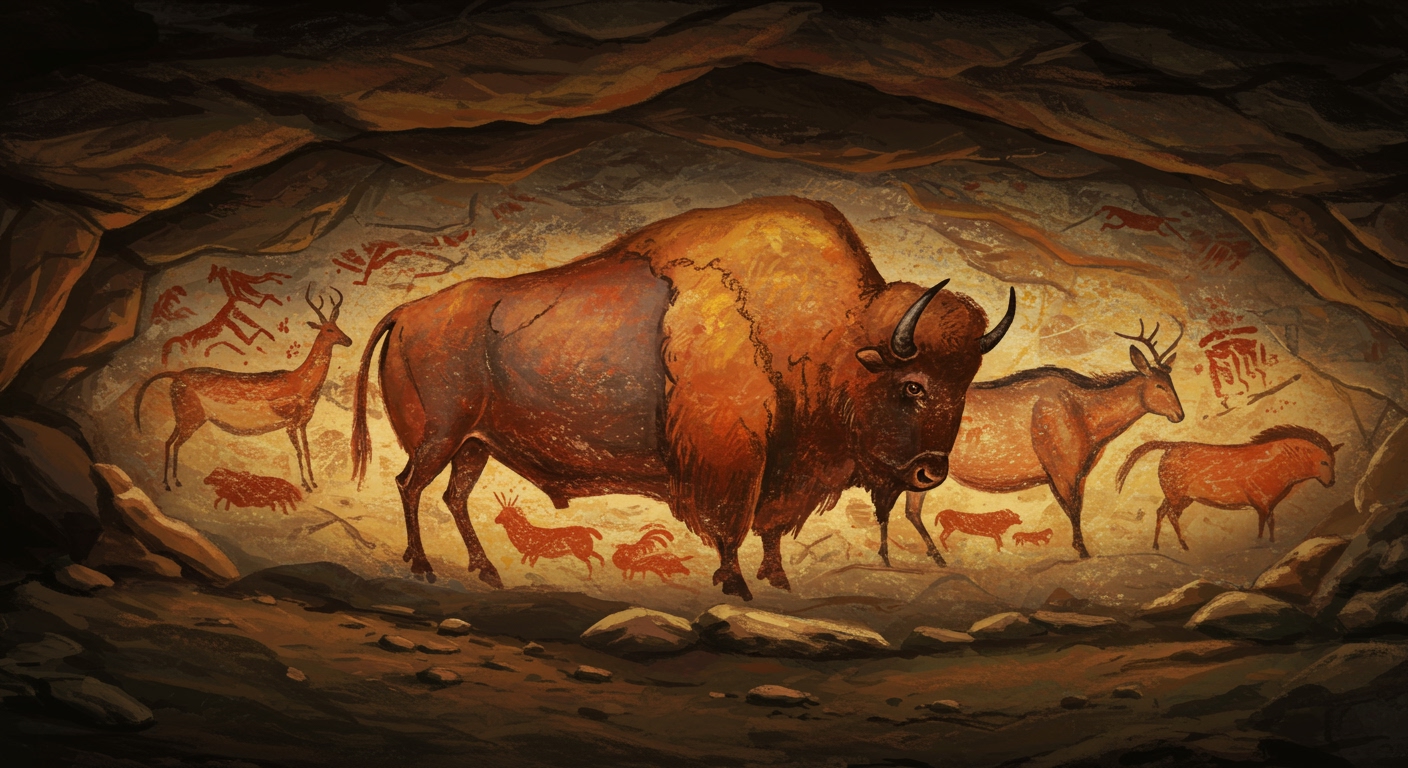
B. Phoenician, Greek, and Carthaginian Influences
- Phoenician Traders (c. 1100 BCE): Established prosperous trading settlements along the southern and eastern coasts, such as Gades (Cadiz) and Malaca (Málaga), introducing writing and advanced metallurgy.
- Greek Colonization: Greeks also established trading posts, primarily along the eastern Mediterranean shore, notably Empúries, and introduced crops like olives and grapes.
- Carthaginian Presence: Successors to the Phoenicians, the Carthaginians expanded their influence, especially in the south, founding cities like Cartagena. Their rivalry with Rome would dramatically change Iberia’s fate.
II. Roman Hispania: The Birth of a Name (218 BCE – 5th Century CE)
The Roman conquest marked a transformative period, giving the peninsula its enduring name and deeply influencing its culture, language, and legal systems.
A. The Roman Conquest and Romanization
- Second Punic War (218 BCE): The arrival of Roman troops to fight the Carthaginians initiated a conquest that lasted nearly two centuries.
- Provincial Divisions: Romans divided Hispania into provinces like Hispania Citerior and Hispania Ulterior, later reorganizing them into Tarraconensis, Baetica, and Lusitania.
- Cultural Assimilation: Hispania became one of the most Romanized provinces, with the establishment of major cities, infrastructure (like the Aqueduct of Segovia), and the widespread adoption of Latin, laws, and customs. Several Roman emperors, including Trajan, Hadrian, and Theodosius, were born in Hispania.[1]
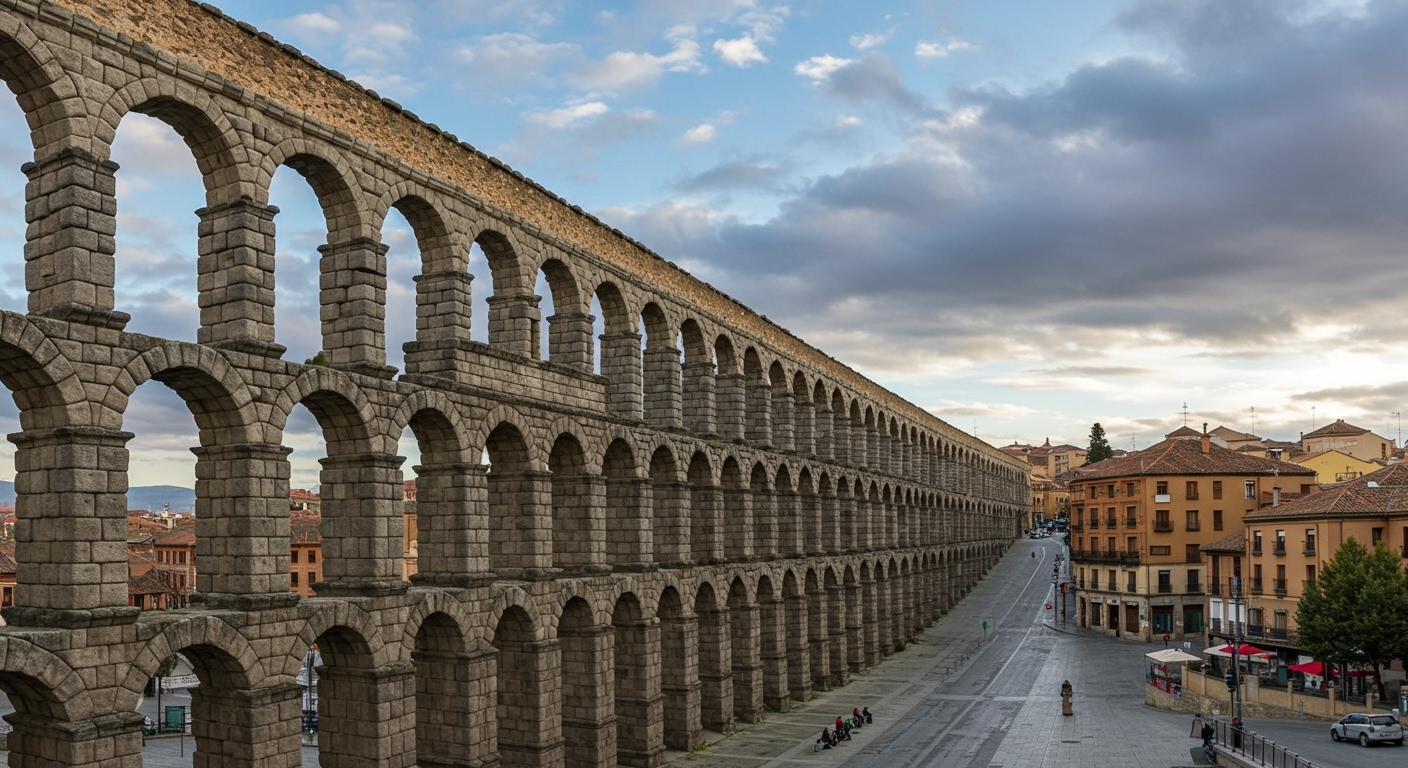
B. Decline of Roman Rule
- Barbarian Invasions (4th-5th Centuries AD): The weakening Western Roman Empire faced invasions by Germanic tribes, including the Suebi, Vandals, and Alans, leading to the collapse of Roman authority.
III. The Visigothic Kingdom: Transition to the Middle Ages (5th – 8th Century CE)
Following the Romans, the Visigoths established a kingdom that attempted to unify the peninsula, bridging the gap between antiquity and the coming Islamic era.
A. Establishment and Consolidation
- Arrival of the Visigoths: The Visigoths settled in Hispania after their defeat by the Franks in Gaul, eventually moving their capital to Toledo.
- Attempts at Unification: Kings like Leovigild (who conquered the Suebi) and Recared (who converted to Catholicism) worked towards political and religious unification.
- Legal and Cultural Legacy: They implemented legal codes like the Liber Iudiciorum, which blended Roman law and influenced future Spanish legal traditions.
B. Decline and Fall
- Internal Strife: Political instability and power struggles among the nobility weakened the Visigothic monarchy.
- Muslim Invasion (711 CE): The defeat of King Roderic at the Battle of Guadalete by Umayyad forces marked the swift end of the Visigothic Kingdom and the beginning of Muslim rule.
IV. Al-Andalus: Islamic Golden Age in Spain (711 – 1492 CE)
A period of profound cultural, scientific, and economic advancement under Muslim rule, transforming large parts of the Iberian Peninsula into a center of learning and innovation.
A. Conquest and Establishment
- Umayyad Conquest (711-718 CE): Tariq ibn Ziyad led Berber and Arab forces across the Strait of Gibraltar, rapidly conquering most of the peninsula.
- Dependent Emirate and Emirate of Córdoba: Initially a dependent emirate under the Umayyad Caliphate, it later became independent as the Emirate of Córdoba under Abd al-Rahman I.
B. The Caliphate of Córdoba and its Zenith
- Golden Age (929-1031 CE): Under Abd al-Rahman III, the Emirate became the Caliphate of Córdoba, reaching its peak as a major cultural, economic, and scientific center in Europe.
- Cultural and Scientific Contributions: Al-Andalus was a hub of intellectual activity, known for advancements in astronomy, medicine, agriculture, philosophy, and architecture (e.g., Great Mosque of Córdoba, Alhambra).[2]
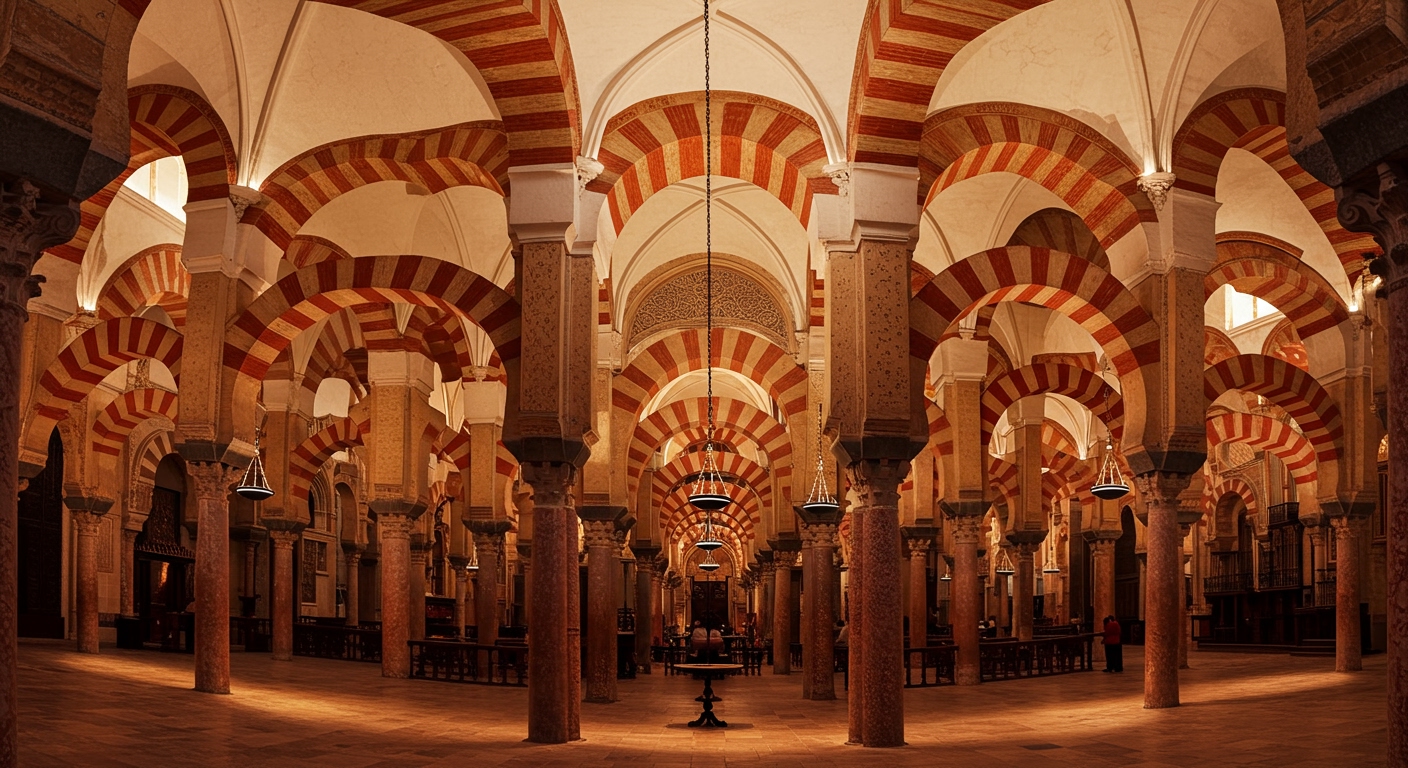
C. Fragmentation and Decline: The Taifa Kingdoms
- Fall of the Caliphate (1031 CE): The Caliphate fragmented into numerous independent city-states known as Taifa kingdoms, weakening Muslim power.
- Almoravid and Almohad Dynasties: North African dynasties intervened to reunify Al-Andalus but eventually succumbed to Christian pressures and internal conflicts.
V. The Reconquista: Centuries of Christian Resurgence (8th – 15th Century CE)
A long and complex series of military campaigns by Christian kingdoms to reclaim the Iberian Peninsula from Muslim rule, culminating in the formation of modern Spain.
A. Early Resistance and Northern Kingdoms
- Battle of Covadonga (c. 718/722 CE): Often marked as the beginning of the Reconquista, a Christian victory in Asturias initiated the resistance.
- Formation of Christian Kingdoms: Kingdoms like Asturias (later León), Navarre, Castile, and Aragon gradually expanded their territories southward.
B. Key Milestones and Major Victories
- Conquest of Toledo (1085 CE): A significant milestone as Alfonso VI of León and Castile captured the former Visigothic capital.
- Battle of Las Navas de Tolosa (1212 CE): A decisive Christian victory against the Almohad forces, severely weakening Muslim control in the south.
- Consolidation of Christian Dominance: By the mid-13th century, most of the peninsula was under Christian rule, leaving only the Nasrid Kingdom of Granada as the last Muslim stronghold.
C. The Fall of Granada (1492 CE)
- The Granada War (1482-1492): The Catholic Monarchs, Ferdinand II of Aragon and Isabella I of Castile, launched the final campaign.
- Surrender of Boabdil: Granada surrendered in January 1492, marking the official end of the Reconquista and Muslim rule in Spain.
VI. The Catholic Monarchs: Unification and the Dawn of an Empire (Late 15th – Early 16th Century)
The reign of Isabella and Ferdinand is widely considered the foundation of a unified Spain and the beginning of its global empire.
A. Dynastic Union and Centralization
- Marriage of Isabella I of Castile and Ferdinand II of Aragon (1469): Their marriage effectively united the two largest Christian kingdoms, creating a dynastic union that laid the foundation for modern Spain.
- Religious Unification: They pursued a policy of religious uniformity, establishing the Spanish Inquisition and issuing the Alhambra Decree (1492) that led to the expulsion of Jews and later, Muslims who refused conversion.
B. The Age of Exploration and Discovery
- Christopher Columbus’s Voyages (1492): The financing of Columbus’s expedition to the Americas initiated Spain’s vast colonial empire, bringing immense wealth and global influence.
- Expansion Overseas: This period saw the rapid establishment of Spanish holdings across the Americas, the West Indies, and later, the Philippines.
VII. The Spanish Empire: Rise and Zenith (Habsburg Spain, 16th – 17th Century)
Under the Habsburg dynasty, Spain reached the peak of its power, becoming a dominant force in Europe and establishing one of the largest empires in history. This era truly defines the Spanish Empire’s rise and fall, as its zenith also sowed the seeds of its eventual decline.
A. Charles I (V): A Global Empire
- Inheritance of Vast Territories (1516): Grandson of the Catholic Monarchs, Charles I (also Holy Roman Emperor Charles V) inherited Spain, its American holdings, the Low Countries, parts of Italy, and the Holy Roman Empire, creating an unprecedented global domain.
- Conflicts and Consolidation: His reign was marked by extensive wars to defend and expand his empire, including conflicts with France, the Ottoman Empire, and Protestant forces in Germany.
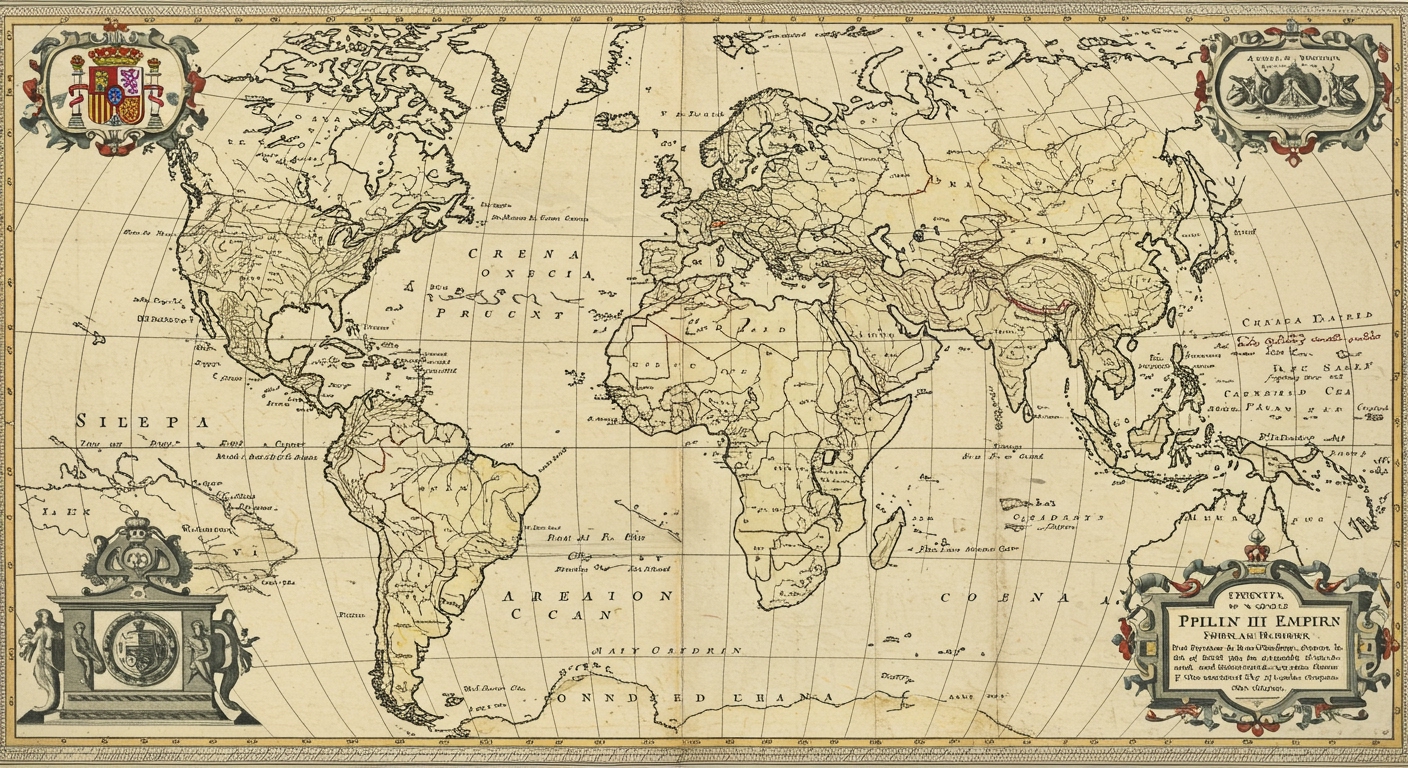
B. Philip II: The Zenith of Power and the Golden Age
- Consolidation of Power: Philip II inherited the Spanish Empire from his father, continuing policies of expansion and defense of Catholicism.
- Spanish Golden Age (Siglo de Oro): This era was a period of extraordinary cultural flourishing in arts, literature, and intellectual thought, producing figures like Miguel de Cervantes, Diego Velázquez, and El Greco.[3]
- Challenges and Imperial Overstretch: Despite its vastness, the empire faced significant challenges, including the Dutch Revolt, wars with England, and escalating debts, leading to a gradual decline in the latter half of the 17th century.
VIII. Decline and Shifting Power (Bourbon Spain, 18th – 19th Century)
The death of the last Habsburg king ushered in a new dynasty and a period of reform, but also continued imperial decline and internal instability.
A. War of the Spanish Succession and the Bourbon Accession
- Death of Charles II (1700): The childless death of the last Habsburg king led to the War of the Spanish Succession.
- Philip V (1700-1746): The grandson of Louis XIV of France, Philip V, ascended to the throne, establishing the House of Bourbon in Spain. The Treaty of Utrecht (1713) formally recognized his rule but resulted in territorial losses, including Gibraltar.
- Enlightenment Reforms: Subsequent Bourbon monarchs like Charles III introduced enlightened reforms aimed at modernizing the economy, administration, and military.
B. Napoleonic Era and 19th Century Instability
- Napoleonic Invasion (1808): Spain was invaded by Napoleon’s forces, leading to the Peninsular War and a period of intense struggle for independence.
- Loss of American Colonies: The early 19th century also saw the independence movements in most of Spain’s American colonies, significantly shrinking its global empire.
- Internal Conflicts: The remainder of the 19th century was marked by political turmoil, including Carlist Wars, liberal revolutions, and the alternating reigns of various monarchs.
IX. Modern Spain: From Conflict to Democracy (20th Century – Present)
The 20th century was a tumultuous period for Spain, moving from monarchy to republic, civil war, dictatorship, and finally, democratic stability.
A. The Spanish Civil War (1936-1939)
- Second Spanish Republic (1931-1939): A period of significant political and social reforms, but also growing polarization.
- Military Uprising (1936): A coup attempt by right-wing military officers, led by General Francisco Franco, against the Republican government, escalated into a brutal civil war.
- Key Events: The war involved major battles (e.g., Madrid, Jarama, Ebro), the bombing of Guernica, and significant international involvement.
- Nationalist Victory (1939): Franco’s Nationalist forces emerged victorious, leading to the establishment of a dictatorship.
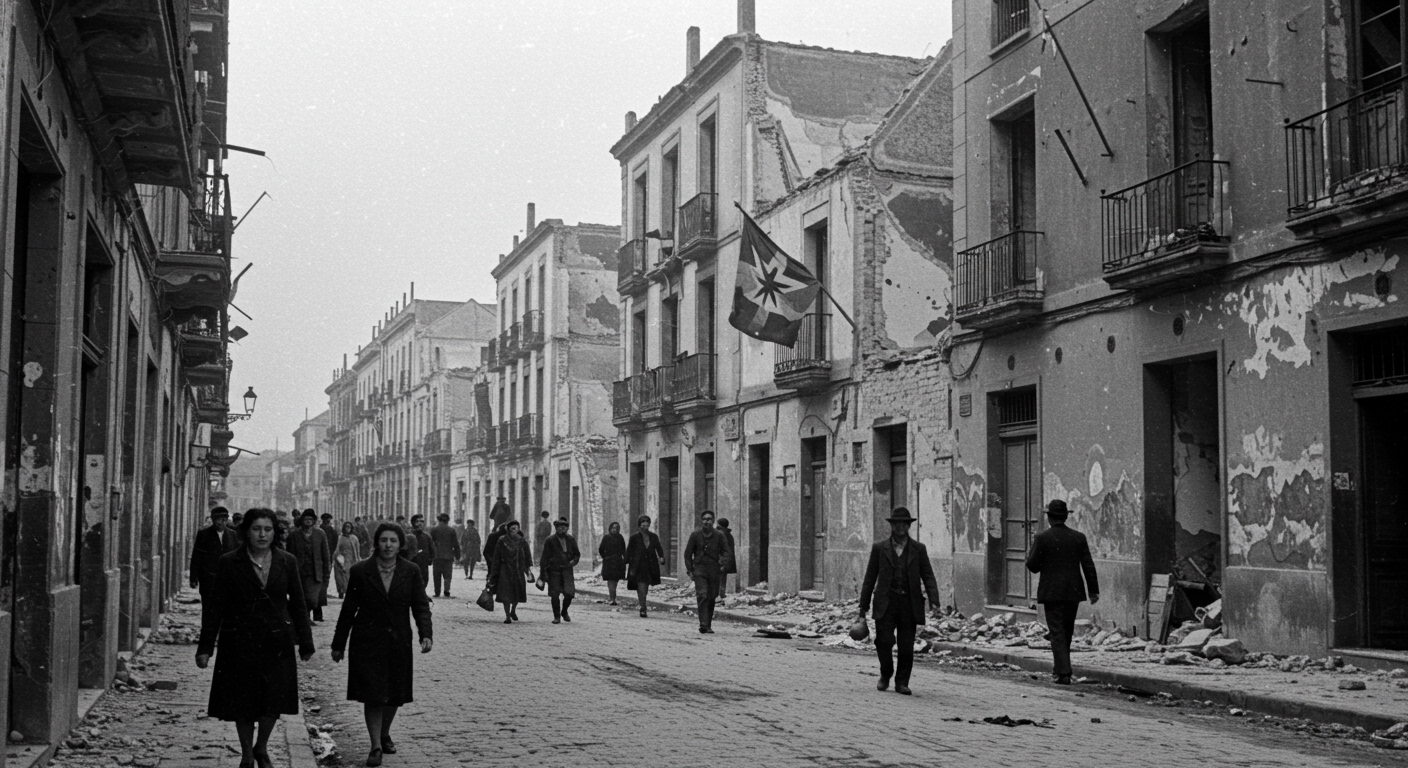
B. Franco’s Dictatorship (1939-1975)
- Authoritarian Rule: General Francisco Franco established an authoritarian regime that lasted nearly four decades, characterized by repression, economic isolation, and conservative Catholic ideology.
- Economic Development: Despite initial isolation, Spain experienced significant economic growth and modernization in the latter half of Franco’s rule.
C. Democratic Transition and Modern Spain
- Restoration of Monarchy (1975): Following Franco’s death, King Juan Carlos I spearheaded a peaceful transition to democracy.
- Constitutional Monarchy: Spain became a constitutional monarchy with a parliamentary democracy.
- Integration into Europe: Spain joined the European Economic Community (now the European Union) in 1986, solidifying its place within modern Europe and becoming an advanced developed nation.
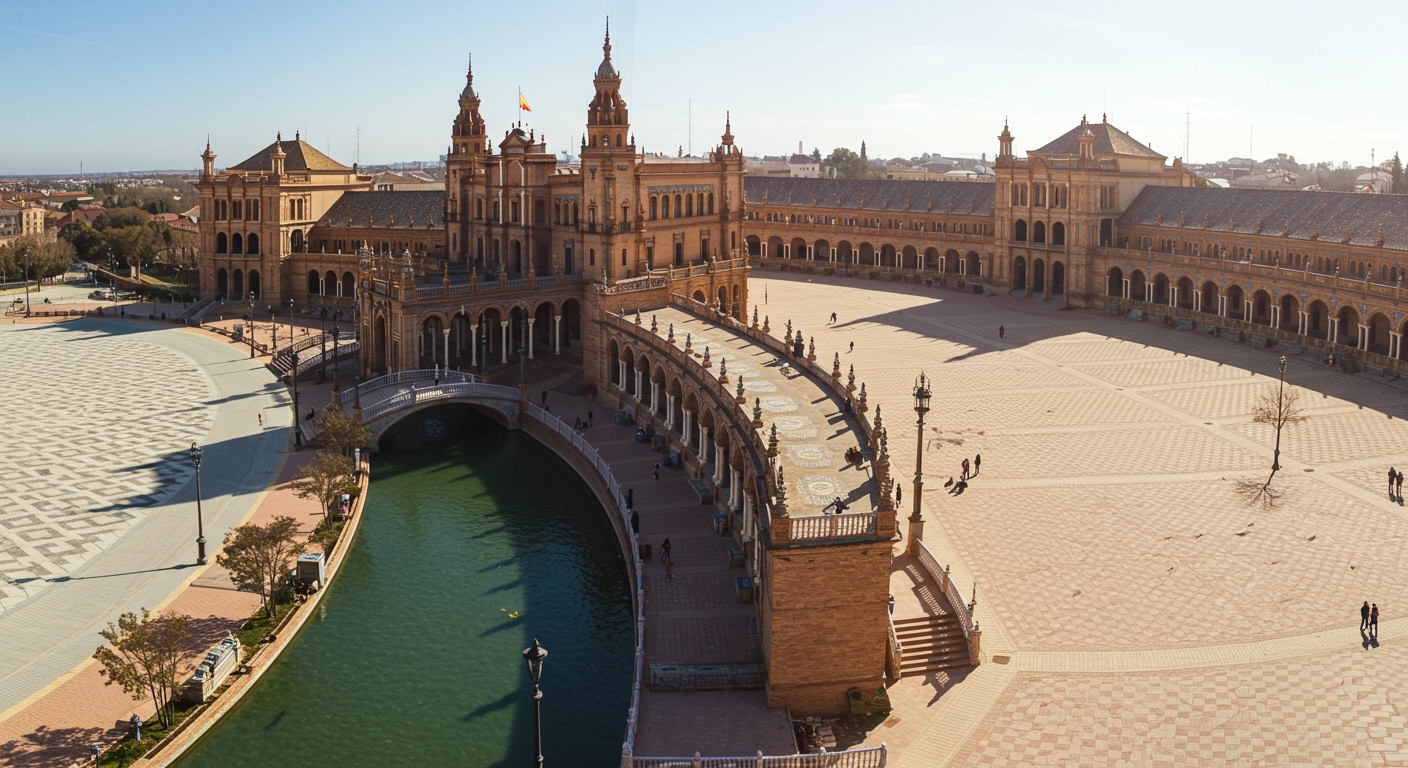
Conclusion: Spain’s Enduring Legacy
The entire history of Spain is a testament to its enduring spirit, shaped by continuous interactions between diverse peoples and civilizations. From the ancient history of Spain explained through its indigenous tribes and Roman rule, to the transformative period of Al-Andalus, the arduous Reconquista, and the global reach of the Spanish Empire’s rise and fall, each era has left an indelible mark. The key events in Spanish history, including the unification under the Catholic Monarchs, the discovery of the Americas, and the tumultuous 20th century, highlight a nation constantly evolving. Today, Spain stands as a vibrant democracy, proud of its complex heritage that continues to influence its rich culture, language, and global connections.



